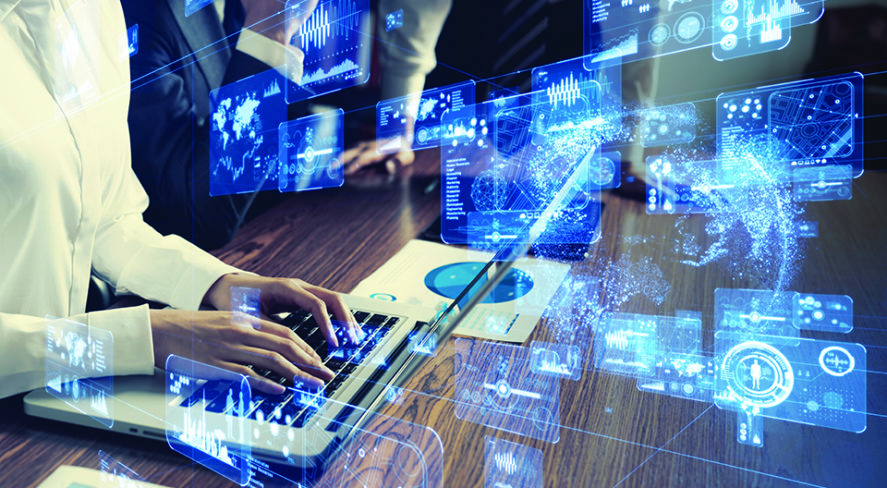You Say You Want an Evolution: How Built-In Intelligence Enables Security Devices to Expand Beyond Their Usual Functions


Safeguarding people and property remains the top priority for the security sector, but the industry is evolving into more than that. The Internet of Things and increasing connectivity are expanding the role of security devices, making them an integral part of the vast, connected digital infrastructure.
This is possible through the expansion in intelligent security devices – like IP cameras with built-in video analytics – and systems that seamlessly integrate to enhance security, automate processes and increase efficiency in monitoring and control. Software and services are also beginning to play an increasingly important role.
Connected Systems for Customized Solutions
Security systems are no longer isolated. Access control, intrusion detection, video surveillance, facilities management and communications systems are connected, helping to reduce complexity while increasing control. By receiving alarms from various devices and using those alarms to trigger actions, connected systems focus the attention of security and facility personnel on the events that matter most.
For example, at the perimeter of a facility, access credentials with the correct authorization will open a gate or door. However, when access is denied, video from a nearby camera can display at the security operator’s workstation, while a text message with a video snapshot alerts the facility manager to a condition that may require action as a potential attempted breach of the perimeter. By integrating access control and other systems like intrusion detection within a video management system, users gain centralized control of devices and doors across the enterprise. This increases efficiency for the operator and simplifies management of the system.
The layering, or integration, of multiple systems allows for multi-sensor verification of events, dramatically reducing the chance of a false alarm or of an event being missed. This efficiency gain reduces employee workload.
Inside the building, when a camera with on-board video analytics detects an object blocking an emergency exit door, it can trigger the public address system to play an automated message over a nearby loudspeaker with instructions to move the object. In addition, the system can help users enforce no-parking zones by triggering a message when a vehicle parks or loiters in a fire lane. These solutions enhance safety while also reducing the risk of fines when violations occur.
In many larger office buildings, the elevator lobby is the main artery to move people. It is possible to limit access to floors based on individual need via access control and, using analytics like crowd detection, redirect traffic during peak congestion. Making the process faster while maintaining safety and security can have a major impact on the productivity of a workforce and on the perception of a building’s accessibility.
Building staff can gain the ability to handle events, like a mass evacuation, more dynamically and efficiently than before. Elevators are typically disabled during these types of events, but that leaves occupants searching for the quickest way out along paths they rarely use. IP cameras, motion detectors and access control elements can provide the system with a real-time understanding of where people are and how best to guide movement patterns. With the addition of a building-level communications system, automated or manual announcements, individualized and localized, can quickly inform people of their best options.
For sensitive areas of a facility, such as a server room, combining video security with access control and intrusion detection limits access. Together, these technologies provide enhanced security and can even protect the individual hardware racks inside the room. For example, each server rack can have its own access reader, keypad and camera. This can keep unauthorized individuals from gaining access to the equipment and restrict authorized people to scheduled days and times, limiting after-hours access to pre-determined times for maintenance or upgrades. Using a keypad and a reader on the racks enables the use of dual authentication, so the individual must present something he or she has – a credential – along with something he or she knows – a PIN – for greater security. The IP camera ensures that attempts to open the racks by unauthorized individuals will trigger a text or email alert, complete with a video snapshot, to the facility manager. Just as important, there is now an auditable history of access events.
These are just some examples of the possibilities with connected systems. This type of integration adds flexibility for integrators, making it possible for them to customize solutions that fully address a user’s security pain points and provide added benefits for an organization.
Extending Beyond Security With Intelligent Devices
With built-in intelligence, security devices are also moving beyond their traditional roles. For example, the video security camera is no longer a passive system that simply records events, with about 90 percent of recordings never being viewed. With recent advances in analytics, security practitioners have a never-tiring assistant that can help them to manage, and extract more value from, their vast quantities of video data.
In this increasingly connected world, the smart video security camera becomes a versatile sensor that enables other “things” to extract and interpret the recordings to bring security, life safety and business intelligence to another level, enabling nearly 100 percent utilization of the video. The data is fed to solutions that collect information from multiple devices, aggregating and interpreting it to provide valuable insights. These solutions increase efficiency, reduce costs and create more business opportunities with new revenue streams.
Intelligent cameras, for example, can help large organizations or city planners monitor parking space utilization. In lots, cameras can count the number of open parking spaces, the availability of specialized spots – such as those for handicapped drivers or electric vehicles – or track ingress and egress, then relay this data to parking management systems without the need for a series of ground sensors. Sharing this information, along with alternative parking locations, on a dynamic message sign can help people to find parking more quickly, improve efficiency and reduce emissions.
In addition, cities and parking lot managers can take advantage of machine learning to track how long a vehicle remains in a time-limited space, which can boost revenue streams from parking violations. This same concept applies at the airport curbside for passenger drop-off and pick-up, where parking time is restricted. Video analytics with machine learning can detect and alert law enforcement to parked vehicles that exceed the time limit. Machine learning also enables video analytics to function in application-specific ways, as it can identify objects and situations that have been defined by the user.
On roadways, intelligent cameras can improve safety by alerting to risks with automatic incident detection and identification of slow or stopped vehicles, queues of vehicles at exit ramps, vehicles traveling the wrong way, objects in the road, and other traffic events. Video sensors can also classify objects as cars, trucks, bicycles or pedestrians and can detect speed and trajectory. With this real-time information, city traffic planning directors and engineers can analyze flow patterns on networks of roadways to develop safer and more efficient intersections.
Machine learning can also enable intelligent cameras to gather data in heavily controlled environments, such as airports, where awareness of traffic flow and plane status is critical. Data collected could include information on how long an airplane parks at a gate, the time it takes to load passengers’ luggage or how long it takes to refuel. This information is helpful for reducing turnaround times, improving efficiency and reducing costs.
In retail stores, video security cameras can capture anonymous shopper data that provides merchandisers and operations managers with actionable insights. With cloud-based processing, the data shows where customers walk, dwell and engage with product placements, providing information that can be used to maximize customer engagement and increase sales. By analyzing the data, operations managers can enhance service by adjusting staffing to accommodate peak days and times, thereby increasing customer loyalty. This can all be done without video streams ever leaving the retailer’s premises, thus maintaining shoppers’ privacy.
In a large building, meanwhile, sensors can provide data on occupancy to help facilities managers identify patterns in the arrival and departure times of employees on each floor in order to better manage costs associated with HVAC and lighting.
Considering the Essentials
Using video analytics to integrate with other systems requires high-quality images at all times to ensure reliability and accuracy. If image quality is lacking, the accuracy of the data is at risk, as is any video evidence.
Video analytics technology must also be robust enough to differentiate between genuine events and false triggers such as snow, trees, rain, hail and water reflections that can make video data difficult to interpret. It should also be trainable. The camera should be able to retain information on user-defined objects and situations and refer to it when processing scenes.
With the right platform, devices like IP cameras have the potential to be as flexible as a smartphone, creating unlimited new uses within their lifetimes. Capturing data and putting it in a usable structure is a foundational piece. Just as important is funneling that raw data into a platform that transforms it into intelligence. This is key to enabling both automated and human decisions. It is a quickly evolving area with exciting advances in artificial intelligence powering new abilities every day.
Equally important is a high level of data security. Users need to know that the data they are capturing is protected when in transit and when stored. A system approach is the key to achieving the highest standards in end-to-end data security. For video systems, this means assigning every component in the network an authentication key, securing data from hackers by encrypting it at the hardware level using a cryptographic key that is safely stored in a built-in trusted platform module, managing user access rights and supporting the setup of a public key infrastructure.
Fueling Innovation
The continued proliferation of connected devices will change customer requirements and preferences. Extending the role of security devices beyond their standard usage enables solutions designed to help users address the challenges they face in their businesses and organizations. This approach will help to shape the future of security – one in which the security department can make the transition from a pure cost center to a profit center – and continue to fuel innovation.
Sean Murphy is director of vertical markets development for Bosch Security and Safety Systems.
